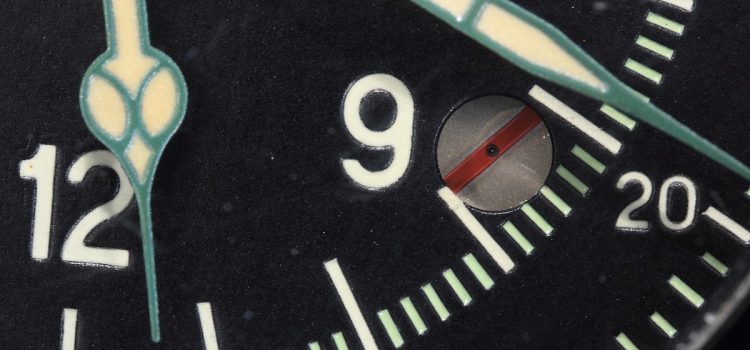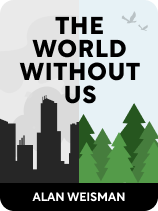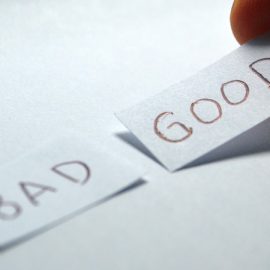

This article is an excerpt from the Shortform book guide to "The World Without Us" by Alan Weisman. Shortform has the world's best summaries and analyses of books you should be reading.
Like this article? Sign up for a free trial here.
What could wipe out humanity? How have civilizations been destroyed in the past?
In The World Without Us, science journalist Alan Weisman asks what would happen if the human race vanished overnight. Although he states that the means of extinction are not necessarily relevant to the thought experiment, he speculates about how it might occur.
Read more to learn about a few doomsday scenarios that might cause the extinction of the human race.
Scenarios for the Extinction of the Human Race
Weisman’s goal in writing The World Without Us is to address humanity’s environmental impact without pointing the finger of blame at his readers. Instead, he aims to encourage people to imagine a world in which nature is allowed to flourish. He arrives there through the science-fictional conceit of a sudden mass human extinction and postulates a few doomsday scenarios. Weisman is clear to point out that this is just a thought experiment; he doesn’t advocate the extinction of the human race as a solution to the world’s environmental problems.
A nuclear war might wipe us out completely, but that would destroy all life on Earth. As for what scenario could result in the human race’s disappearance without adversely affecting the rest of the world, Weisman says that a virus is the most likely candidate.
Some might believe that the means of humanity’s disappearance could be that every member of our species is simultaneously abducted by aliens or snapped out of existence by a cosmic supervillain.
| The End of the World As We Know It In Collapse, Jared Diamond identifies several factors that have caused the end of past human societies, including war, environmental catastrophes, and economic failure. In 1177 BC, Eric H. Cline focuses on the sudden simultaneous collapse of Late Bronze Age societies in the Near and Middle East, which was brought about by a confluence of military, economic, and natural disasters. History tells us only about how human societies have failed in the past, not about what might kill us off completely, though similar circumstances have the potential if carried to catastrophic extremes, such as global nuclear war or unstoppable pandemics. In The Precipice, Toby Ord ranks various threats to our existence in terms of risk and tops his list with a pair of options unavailable to us in the past—genetically engineered diseases and artificial intelligence developed without human ethical constraints. It may be that humanity isn’t the only intelligent species to have faced the possibility of its own destruction. One possible solution to the Fermi Paradox—the question of why we haven’t found evidence of alien life, given the vastness of the universe—is that every intelligent species must somehow avoid the so-called “Great Filter” of environmental and technological self-destruction and that most don’t pass the test. |
Environment-Related Scenarios
A severe environmental catastrophe, such as extreme global warming, could leave the Earth no longer viable for life. There are those who believe that, if our population gets too big, maximizing the stress that humanity puts on the environment, the chances of a worldwide die-off become more likely, whether from lack of food, water, or land—or by increasing the spread of disease.
| The World With Us Though Weisman envisions a world without humans as a means to paint a hopeful picture of environmental recovery, for many people alive today the thought of humanity’s imminent extinction is a very real source of existential dread. Young people in particular are greatly worried by the effects of climate change and feel betrayed by what they perceive as an inadequate government response to the situation. And yet, polls show that a majority of young people are also optimistic that a solution to the climate crisis can be found. What form that solution may take is still up for debate. In How to Avoid a Climate Disaster, Bill Gates stresses reducing carbon emissions as the top priority in minimizing climate change. In Apocalypse Never, Michael Shellenberger argues in favor of increased industrialization, especially in developing countries, as a way to drive urbanization, lowered birth rates, and energy-efficient living. In The Future We Choose, Christiana Figueres and Tom Rivett-Carnac assert that creating a sustainable future will require major changes in the way people live and, that while it’s not too late to avert a climate catastrophe, the time to act is now. |

———End of Preview———
Like what you just read? Read the rest of the world's best book summary and analysis of Alan Weisman's "The World Without Us" at Shortform.
Here's what you'll find in our full The World Without Us summary:
- What would happen to Earth if the human race disappeared
- How the planet would benefit from a human extinction
- What the immediate vs. long-term effects would look like






